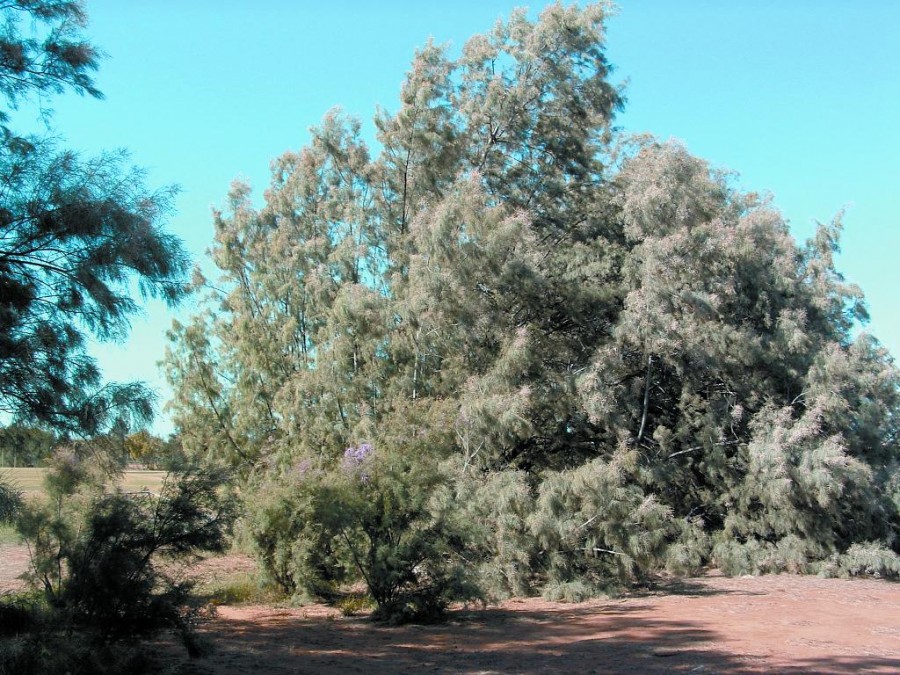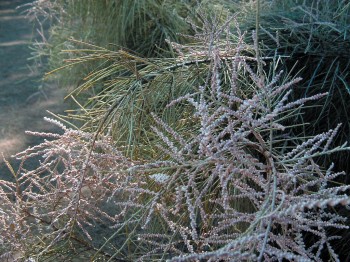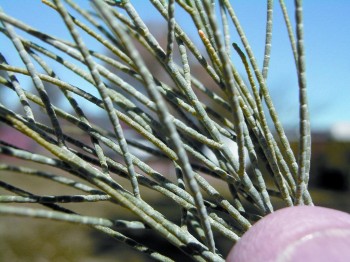Weed Profile - Athel Pine (Tamarix aphylla)
How does this weed affect you?
Athel pine is one of the worst weeds in Australia because of its invasiveness, potential for spread, and economic and environmental impacts.
Athel pine forms dense stands along inland rivers. It consumes water more quickly than native plants, thereby reducing the number and quality of watering holes. It concentrates salt, which is excreted by its leaves. This makes the ground beneath athel pines more salty and excludes native pasture grasses and other salt-sensitive plants.
It can change river flow patterns and cause overland flooding and bank erosion.
Because they are drought tolerant and fire resistant, athel pines decrease the frequency of fires and alter vegetation structure.
What does it look like?
Athel pine is a spreading tree to 15 m with pendulous, jointed branches. Immature trees have light grey trunks and stems. Mature trees have a thick, rough, dark grey to black bark, and grey-brown stems, and can be up to 1 m in diameter. The minute, dull green leaves superficially resemble pine tree ‘needles’. However, athel pine is misleadingly named as it is a flowering plant, not closely related to true pine trees (conifers). Its small flowers are pinkish-white without stalks, growing on 30–40 mm long spikes from the ends of the previous year’s branches. The fruit is bell shaped with a hairy tuft, and contains numerous small cylindrical seeds. The seeds have a tuft of fine hairs which assists wind dispersal. The trees have strong woody roots which penetrate and spread deeply throughout the soil.
Control
Preventing the further spread of athel pine is critical to the successful management of this problem. As part of the prevention of spread measures, the planting of athel pine for windbreaks, shade or erosion control is now actively discouraged. Weedy Tamarix species should not be imported or further planted, and alternative species should be used. Generally, a native Casuarina or Allocasuarina species will make a good alternative, especially for windbreaks. However, local council weed officers will provide advice.
Control athel pine near rivers
Athel pine in the upper catchments of rivers are the highest priority for control. Experience indicates that athel pine spreads fastest along waterways, especially when summer flooding aids the downstream dispersal of vegetative material and germination of seeds. Therefore, mature athel pines in the uppermost parts of catchments are the highest priority for eradication. Control can then focus on downstream infestations. The lowest priority for control are mature trees away from water.
Read more on NSW WeedWise



